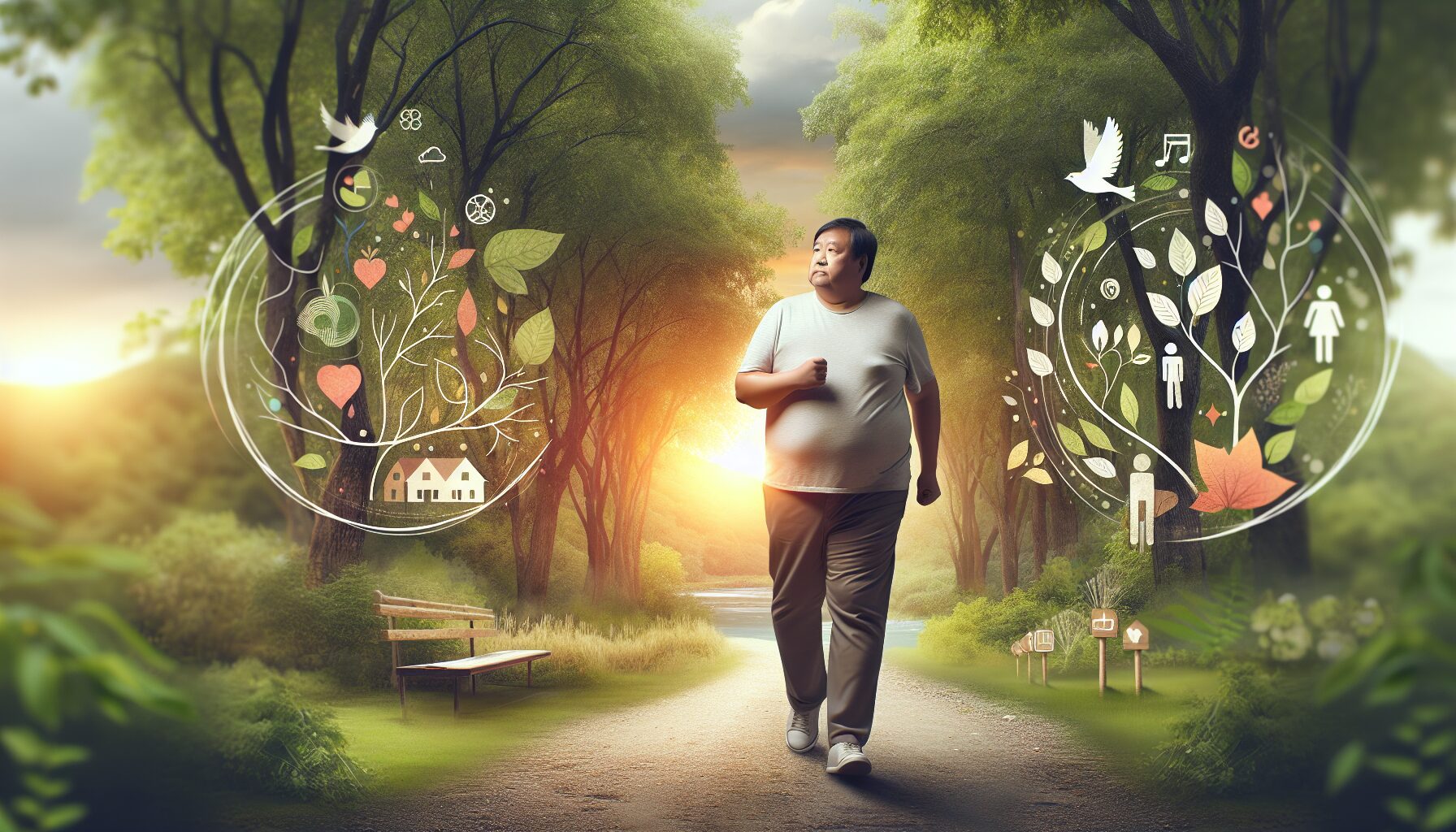Walking and Wellness: How a Simple Stroll Can Benefit an Enlarged Prostate
In the realm of men’s health, few issues are as common yet misunderstood as benign prostatic hyperplasia (BPH), more commonly known as an enlarged prostate. Affecting a significant portion of the male population, particularly those over the age of 50, BPH can lead to uncomfortable and sometimes debilitating urinary symptoms. While various treatments and lifestyle changes are recommended for managing this condition, one simple activity often gets overlooked: walking. This article delves into how walking can be an effective and beneficial practice for those dealing with an enlarged prostate.

Understanding Benign Prostatic Hyperplasia (BPH)
Before exploring the benefits of walking, it’s crucial to understand what BPH entails. The prostate is a small gland located just below the bladder in men, playing a vital role in the reproductive system by producing seminal fluid. As men age, the prostate tends to enlarge naturally. While this enlargement is benign and not cancerous, it can compress the urethra and cause various urinary symptoms, such as:
– Frequent urination, especially at night
– Difficulty starting urination
– Weak urine stream or stopping and starting
– Inability to completely empty the bladder
These symptoms can significantly affect one’s quality of life, leading many to seek medical advice and treatment.
The Role of Exercise in Prostate Health
Physical activity is a cornerstone of overall health, and its benefits extend to prostate health as well. Exercise helps in maintaining a healthy weight, reducing inflammation, and improving blood circulation—all factors that can positively impact prostate health. Among various forms of exercise, walking stands out due to its accessibility, low impact on joints, and numerous health benefits.

How Walking Benefits an Enlarged Prostate
1. Improved Circulation
Walking increases blood flow throughout the body, including the pelvic region where the prostate is located. Improved circulation can help reduce inflammation and swelling in the prostate gland, alleviating some symptoms associated with BPH.
2. Weight Management
Obesity is a known risk factor for BPH and its symptoms. Walking is an excellent way to burn calories and maintain a healthy weight. Even moderate weight loss can significantly reduce the severity of urinary symptoms in men with an enlarged prostate.
3. Hormonal Balance
Regular physical activity like walking helps regulate hormones such as insulin and testosterone. Balanced hormone levels are crucial in managing BPH since hormonal imbalances can contribute to prostate enlargement.
4. Stress Reduction
Stress is often overlooked but plays a significant role in exacerbating BPH symptoms. Walking serves as a natural stress reliever by releasing endorphins—the body’s natural mood elevators. Reduced stress levels can lead to fewer urinary issues and overall improved well-being.
5. Muscle Tone and Strength
Walking helps strengthen pelvic floor muscles that support bladder control. Stronger muscles can improve urinary function and reduce symptoms like urgency and frequency.
Scientific Evidence Supporting Walking for BPH
Several studies have highlighted the positive impact of physical activity on BPH symptoms:
– A study published in “The Journal of Urology” found that men who engaged in moderate-to-vigorous physical activity had a lower risk of developing BPH compared to those with sedentary lifestyles.
– Research from Harvard University indicated that men who walked briskly for at least three hours per week had fewer BPH symptoms than those who walked less or not at all.
– Another study from Italy demonstrated that physical activity, including walking, improved quality of life and reduced lower urinary tract symptoms in men with BPH.
Practical Tips for Incorporating Walking into Your Routine
Starting a walking routine doesn’t require any special equipment or training; it’s one of the most accessible forms of exercise available. Here are some tips to get started:
1. Set Realistic Goals
Begin with short walks around your neighborhood or local park. Aim for 10-15 minutes initially and gradually increase your duration as you build stamina.
2. Consistency is Key
Make walking a daily habit. Consistency yields better results than sporadic efforts. Aim for at least 30 minutes of walking on most days of the week.
3. Choose the Right Footwear
Invest in a good pair of walking shoes that provide adequate support and cushioning to avoid injuries.
4. Incorporate Variety
Vary your routes to keep your walks interesting. Explore different parks or trails to make your routine enjoyable.
5. Invite a Friend
Walking with a friend or joining a walking group can make the activity more enjoyable and keep you motivated.
6. Monitor Your Progress
Use a pedometer or smartphone app to track your steps and progress over time. Seeing your improvements can be highly motivating.

When Walking Isn’t Enough: Other Treatment Options
While walking offers numerous benefits for managing BPH symptoms, it may not be sufficient for everyone, especially those with severe symptoms. It’s essential to consult with a healthcare provider for a comprehensive treatment plan tailored to your specific needs. Other treatments for BPH include:
– Medications: Alpha-blockers and 5-alpha-reductase inhibitors are commonly prescribed to relieve symptoms.
– Minimally invasive procedures: Techniques like transurethral microwave thermotherapy (TUMT) or transurethral needle ablation (TUNA) aim to reduce prostate size.
– Surgery: In severe cases, surgical options such as transurethral resection of the prostate (TURP) may be necessary.
Conclusion
Walking offers an array of benefits for those dealing with an enlarged prostate—from improved circulation and weight management to hormonal balance and stress reduction. While it may not replace medical treatments entirely, incorporating regular walks into your daily routine can significantly alleviate BPH symptoms and enhance overall quality of life. So lace up those walking shoes, step outside, and take strides towards better prostate health today!
